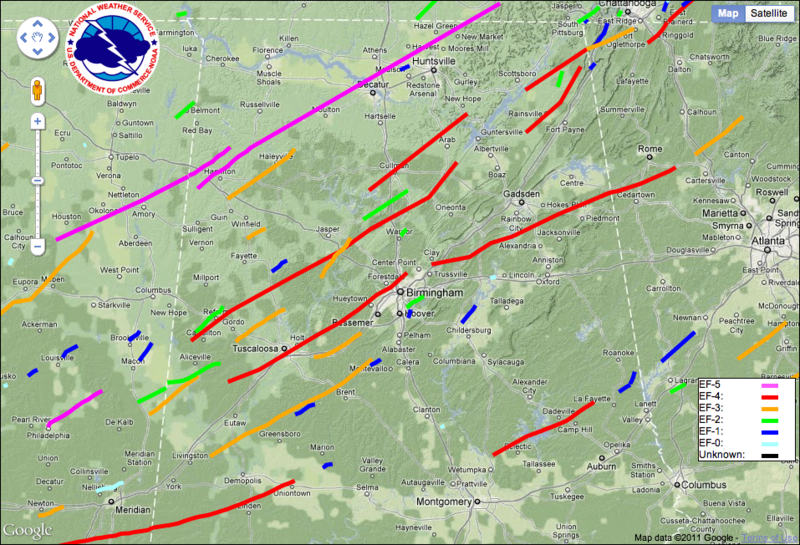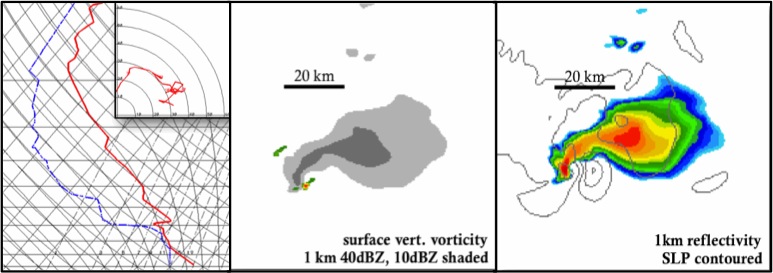Mesoscale and Stormscale Ingredients of Tornadic Supercells Producing Long-Track Tornadoes in the 2011 Alabama Super Outbreak
Samantha L. Chiu, Brian F. Jewett and Robert B.
Wilhelmson
Department of Atmospheric Sciences and NCSA, University of Illinois
SUMMARY
This study focuses on the environmental and storm scale dynamics of supercells that produce long-track tornadoes, with modeling emphasis on the central Alabama storms from April 27, 2011 - part of the 2011 Super Outbreak. While most of the 204 tornadoes produced on this day were weaker and short-lived, this particular outbreak produced 5 tornadoes in Alabama alone whose path-length exceeded 50 documented miles.

Figure 1: EF-Scale rated tornado tracks from April 27, 2011
outbreak across central Alabama. [Image credit: National Weather Service]
The results of numerical simulations are inspected for both environmental and storm-scale contributions that make possible the formation and maintenance of such long-track tornadoes.
A two-pronged approach is undertaken, utilizing both idealized and real-data simulations with the Weather Research and Forecasting [WRF] Model. Idealized simulations will help isolate environmental contributions, such as instability and shear, to long-track tornadic storm structure. Properties of simulated soundings, for instance hodograph length and curvature, 0-1km storm relative helicity [SRH], and 0-3km SRH in addition to other buoyancy properties are compared to idealized soundings described by Adlerman and Droegemeier 2005 in an effort to identify properties conducive to storms with non-cycling mesocyclones.

Figure 2, from left to right: Birmingham, AL sounding and hodograph from 18UTC April 27, 2011; Simulated surface vertical vorticity from idealized run based on 18UTC April 27, 2011 KBMX sounding; Simulated 1km reflectivity from same idealized run based on 18UTC April 27, 2011 KBMX sounding.
Real-data simulations will model the mesoscale forcing and environmental changes along storm tracks. Uncertainty about the possibly steady-state nature of the inflow characteristics and storm structures of long-track tornado sustaining storms, such as the Tuscaloosa cell3, will be investigated. Model soundings are examined fr the inflow of simulated storms in order to diagnose and understand favorable environments and any changes present within them in which the storms may have developed and been sustained, with specific concentration on SRH, CAPE, and hodograph length and curvature. Additional analysis focuses on identifying and investigating mesoscale boundaries and possible storm scale vorticity structures that may have played a role in intensifying and/or sustaining the tornadic cells.

Figure 3, from left to right: Archived reflectivity with area of interest boxed [image credit: UCAR]; Simulated 1km reflectivity from real-data simulation based on RUC/GFS data; Simulated storm tracks with maximum vertical vorticity in color shading.
3
Karstens,
C. (2012).
Analysis
of Tornado-Induced Tree-Fall using Aerial Photography from the
Joplin, MO and Tuscaloosa-Birmingham, AL Tornadoes of 2011. Manuscript
to be submitted for publication.

